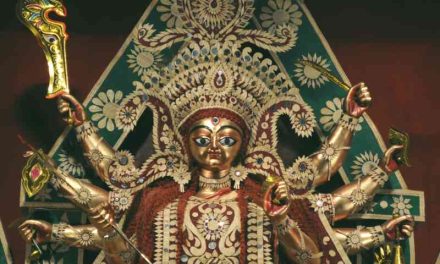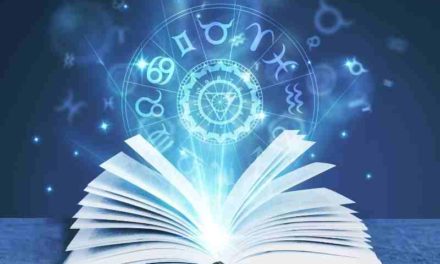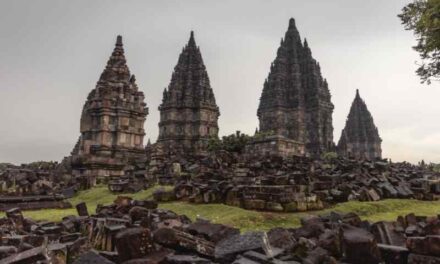Shivaling (of Shivalingam, but also of Shiva Linga) is a representation of Shiva (and Shakti) in all of his manifestations, from the grandest to the most humble. It is clean and fortunate to be called “Shiv.” The fragile structure is referred to as “Lingam.” We’ve also argued before that Shiva is not a pure tamasic god in the traditional sense. Let us consider the nature of the Shiva Linga for a moment.
His role as the universe’s murderer is just one of the many layers or manifestations of his character. Shiva is considered to be the purest of all the gods. Consequently, the hue is neither blue nor black, but pure, which represents the purity of its sattvic nature and hence represents the absence of ego.
The worship of Shiva Lingam (lingarchana) is the most frequent style of devotion in both Shaivism and mainstream Hinduism since it reflects the essence of Shiva, his presence as Isvara, and his inseparable connection with Shakti, as well as his multidimensional complexity. The Lingam is often worn as an adornment by adherents of various faiths, usually around the neck.
The very nature of Shiva Lingam is considered to produce beneficial benefits for everyone who comes into contact with it. When one worships it, he or she is cleansed from all prior transgressions. The Tantric scriptures go into great depth regarding how to effectively serve the Lingam, and they are well worth reading.
The origins of the Shiva Lingam may be traced back thousands of years. There have been several discoveries of similar objects in excavations at other Indus sites. ) Some experts, on the other hand, are of the opinion that they do not mirror Shiva Lingams later in the day.
In India, there are hundreds of Hindu temples that are completely dedicated to the worship of Shiva in this manner. Some of them are referred to as Jyotirlingas (light-infused lingams), and they are thought to be the holiest of them all.
Both the Jyotirlinga temples and the Shakti temples may be found at various locations across India. Everyone has a mystical, metaphysical, and historical significance of their own. Despite their purity and historical significance, they continue to attract millions of worshippers from all over the world every year.
The majority of them are located on the banks of sacred rivers or in close proximity to sources of water, or high in the Himalayas, demonstrating Shiva’s connection to water, snow, healing, and cleansing, among other things.
The Parashurameshwara sanctuary, situated near Tirupathi in Andhra Pradesh, is home to the world’s oldest Shiva Lingam, which is believed to have been in existence since the 3rd century BC.
Shiva Linga can be classified into many categories
Shiva Lingams are available in a variety of shapes and sizes, depending on the material from which they are made. Kanchi, Chidambaram, Tirchinapalli, Tiruvannamalai, and Sri Kalahasti are among the locations where the Pancha Bhuta Lingams can be found, each of which represents one of the five elements (earth, sky, water, fire, and air). The Pancha Bhuta Lingams can be found in each of the five locations listed above.
These are also aligned with the sun and the moon, in addition to other things. Take, for example, the Surya Lingam temple in Konark, close to Jagannath Puri, and the Chandra Lingam temple in Chittagong, Bangladesh, both of which are dedicated to Shiva.
Wood, iron, precious stones, gold, silver, alloys (dhatus), steel, plastic, dirt, maize, wheat, and clay are all possible materials for Lingam construction. Some holy rivers, like the Narmada, have a large number of round and polished stones that are naturally found on their river banks, and these stones are utilized to create Shiva Lingams.
Shiva Lingams are sometimes discovered by chance. The places where they are found are often referred to be sacred. Many of these are likely to be historical sites dating back thousands of years. Many temples have been established in the past when Shiva Lingams were unearthed through excavations, mining, or plowing, and these temples are still standing today.
According to the Mahaparinirvana Tantra, the erection of a Shiva Lingam in a temple or in a dwelling is exceedingly favorable and is comparable to the performance of 10,000 horse sacrifices or the drilling of a water tank in barren terrain. Those who participate in religious activities are cleansed of their sins. As a result, everyone who lives in the region is cleansed of any and all crimes that they may have committed in the past.
But worshippers are cautioned not to tamper with Shiva Lingams or use them for personal gain. They are expected to live pure and godly lifestyles when passing by Shiva Lingams or while staying in their respective residences on their travels. Regardless of the holiness associated with them, they are not meant to be used for aesthetic and frivolous purposes or to be displayed in public places.
Despite the fact that they purify the worshippers of their previous misdeeds, it is stated that any and all sins committed in the vicinity of the Shiva Lingam, whether in a temple or a structure, stick to the sinners and strike them with the force of a thunderbolt.
Consequently, one of the widely held views is that one should not have the Shiva Lingam in the home unless one intends to worship it according to established rituals and live a moral life. However, this is not always the case. In addition, there is a concept that one should not worship a damaged Shiva Lingam or a damaged Shiva picture.
The concept of the Shiva Linga
The Shiva Linga has a tremendous degree of symbolic significance in Hinduism. It has already been said that the Lingam represents Shiva in his subtle and formless nature as Isvara, in conjunction with Prakriti, his dynamic force, in a conceptual picture. The Shiva Linga represents their perpetual and inseparable union, which is the source of all manifestation.
Linga is a Sanskrit word that signifies implicit. As a result, the fundamental meaning of Shiva Known as the Linga, Shiva’s formless and delicate body is in total connection with his consort, Shakti. According to the Bhagavadgita, growth occurs when Purusha is manifested in Prakriti (the material world).
The Shiva Linga is a representation of the current condition of events. They represent both the duality and the non-duality of existence since they are destined to be together forever. The goddesses Shiva and Shakti are identical in their purest and most powerful forms, yet they are differentiated on the lower levels of existence in order to make it possible for life to continue via death and rebirth.
The genuine truth is non-dualistic, but the actual fact is dualistic as a result of the distortion or confusion caused by the effect of Maya or Shakti on the perception of the world. In other words, although Shiva and Shakti seem to represent two distinct personalities on the surface, at their core, they are both manifestations of the same ultimate truth.
The Shiva Lingam not only aspires to their everlasting marriage but also to their unitary dimension, while affirming the Advaita Vedantic (non-dualistic) conviction that, although Shiva and Shakti appear to be two separate entities on the surface, they are actually one at the most subtle level of consciousness. When a devotee worships them, he or she is worshipping all of the gods at the same time.
The blessings of Shiva and Shakti are necessary in order to achieve release from slavery. While the grace of Shiva (anugraha) is required for salvation, it is only by the might of Shakti that cleansing and preparation may be accomplished. As a result, Sri Aurobindo instructed his pupils that they should propitiate both of them, but that they should surrender to the Mother and allow her to perform the washing.
Self-transformation would not be a selfish act on the part of the individual. This will occur as a result of the heavenly direction, which will allow one to attempt divine assistance. The Shiva Lingams provide us with the quickest and most convenient method of serving both of them at the same time and receiving their pardon.
Shiva Linga is a formless
The worship of Shiva Lingam differs from the worship of idols because Shiva Lingam personifies the formless Shiva who has the complex Shakti within himself, according to experts. During idol worship, you worship the pictures or deities of the gods, however, when you worship the Shiva Lingam, you worship Shiva and Shakti in their formless (amurtha) manifestations.
Worshipping Shiva Lingam is thus regarded superior to any formal devotion that involves the usage of images or deities of other gods or goddesses. This view is also found in the Mahabharata. Even gods like Rama, Krishna, Parvathi, and Ganesha were known to worship Lingams in order to appease Shiva, according to the Epics and Puranas.
As stated in the Shiva Purana, the Shiva Lingam is comprised of both the heavens and the whole planet in one single entity. The higher component (the top) represents the moon or the atmosphere, while the lower component (the bottom) represents the ground. In recognition of the fact that it is physically impossible for humans to worship the sky and the globe, one should emulate this by symbolically worshipping the Shiva Lingam.
The Skanda Purana states that the Shiva Lingam is eternal and uncreated and that it has neither beginning nor end. During the last days, this stayed constant, and Brahma and Vishnu both viewed it as pre-existing at the beginning of existence. It is also said in the Shiva Purana that Aum is the heart and essence of the Shiva Linga (pranavatma), and that it is worshipped in the same manner as the singing of Aum.
The most well-known conceptual explanation of the Shiva Lingam is that it represents a marriage between Shiva and Shakti that extends from the highest to the lowest planes of existence. Every person on the planet, from the most powerful to the most impoverished, owes their existence to the union.
Traditionally, the bottom piece (linga vedi) represents Shakti, while the top portion (lingam) represents Shiva. At the subtle point, the top portion of Shiva symbolizes consciousness, while the lower part of Shiva represents Shakti, or fire, according to Hindu tradition. When the Shiva Lingam is combined with the Chit-Shakti, they symbolize the union of Purusha and Prakriti (a consciousness filled with energy).
As the marriage of Shiv and Shakti manifests itself as a living person or an incarnated soul (jiva), the Shiva Lingam signifies such aspects of life as mind and body or soul and body or prane and apana or knowledge against ignorance or purity versus impurity, among other things. Shiva is the soul, while Shakti is the physical body.
Shiva represents the subtle body, while Shakti represents the gross body. Consequently, every living creature, especially a human being, is a Shiva Lingam that is walking and breathing. The head is Shiva because it is the round object and the seat of awareness, and the physical body is Shakti because it is the basis or the foundation of Shiva.
Traditionally and in popular culture, the Shiva Linga is considered to be a reproductive emblem or a sign of fertility, reflecting the merger of Shiva and Parvathi via sexual union. The male sexual organ is located in the upper section of the body, whereas the female sexual organ is located in the lower portion.
This perspective is supported by data from both historical and literary sources. The Shiva Lingam is constructed in the shape of a cock in numerous ancient temples, as may be seen in the photograph above.
It would be absurd to assume that the Shiva Lingam is only a phallic emblem, as some have done. In addition, opponents have utilized symbolism, in conjunction with some of Tantra’s questionable actions, to disparage Hinduism as a religion.
However, the fact is that the sensual component of Shiva Lingam is just one of many possible interpretations. It is often used because it is easier to comprehend and because it brilliantly depicts the practical and significant features of Shiva and Shakti as the creator’s spouse (pati) and wife (shakthi), respectively (patni).
Shiva and Shakti are more than just bodily manifestations. Their union provides them with more than just physical satisfaction. These are the most important and indisputable facts that remain hidden despite the existence of human life and the whole of nature.
As the ultimate absolute entities that they are, they have both gross and subtle dimensions to their personalities. We are unapologetically and consistently present in all forms of existence.
The Shiva Lingam is the perfect emblem of their huge, outward multiplicity and hidden, inner harmony in all areas of life, and it may be found in every temple. The Shiva Lingam is a technical term that refers to any entity that exists.
It does not need to be circular. It is not required to have a personality or to have a conscience. It may be any creature or phenomenon in which Nature manifests itself as matter and energy, with Shiva serving as a universal reality that provides support and guidance.
Everything in life is sacred because everything is a manifestation of Shiva and Shakti, or the Shiva Linga. A massive Shiva Lingam serves as the centerpiece of the show, which was only made possible by the union of Shiva and Shakti. As a result, Shiva lingam may be associated with every aspect of one’s life.
Consider the following examples: the top portion of the Shiva Lingam may be associated with the sun, the moon, the air (prana), wisdom, and the mind, whereas the bottom section may be associated with the physical world, basic nature, materialism, the gross body, and so on.
Any of the explanations are based on the authors’ own subjective experiences with the topic matter. You are not permitted to incorporate them into any Saiva text or scripture. Furthermore, certain Shakta practices may not accept any of the meanings that have been discussed here since they have differing viewpoints on Shiva and Shakti, as has been stated before. For example, some of them consider Shiva to be a manifestation of Shakti and to be the highest entity.
The concept of Shiva as a passive witness in a subservient and minor function, virtually as a pole or stake in the sacrifice rite of life, may also be considered by others to be both pure awareness and energy united.
According to the Yogini-hridaya-tantra, Shakti is extolled as follows: “Obeyance to Her who is pure Sachhidananda (being, awareness, and bliss), who as Shakti (power or force) resides in the forms of Time and Space, as well as in everything that exists within, and who is the radiant illuminator of all beings.”





